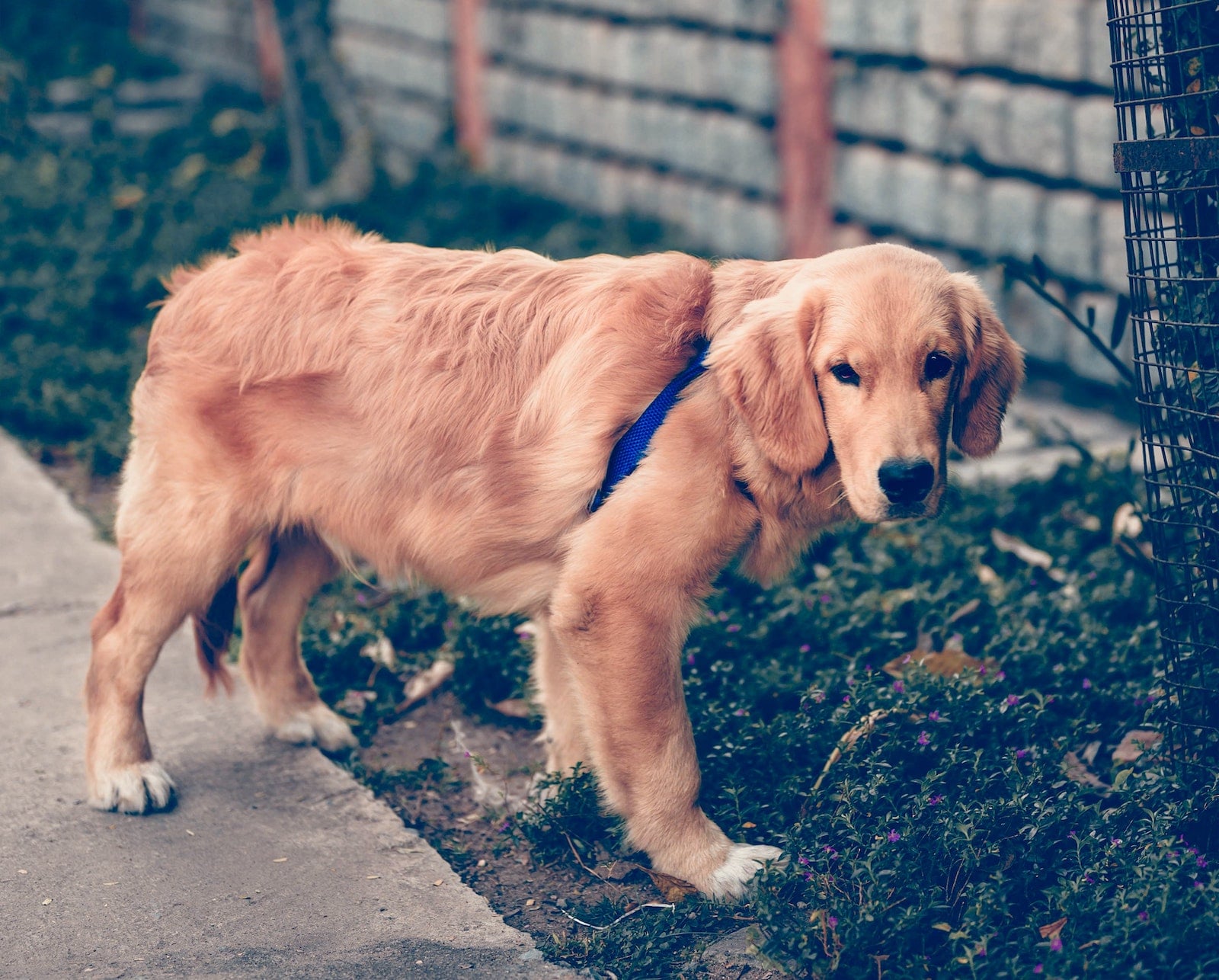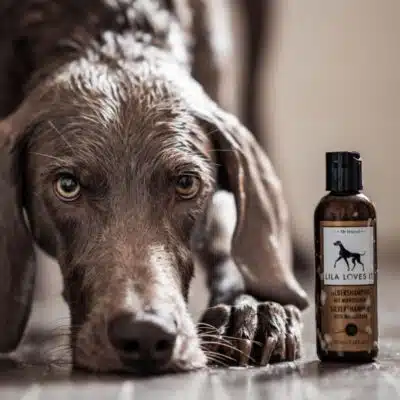What are anal glands actually?
Even if we dog owners (and vets!) are not the biggest fans of anal glands – from a dog’s point of view, they fulfil an important task: they produce a secretion – smelly to us, but probably fragrant to dogs – that is added to the faeces when they drop the big business. In this way, each poop is given a very individual smell and the territory is marked with the droppings. Other passing dogs then receive the dog’s calling card, so to speak, when they sniff it.
In order to fulfil this task, the anal glands are located very close to the anus. If you look – quite rudely – at your dog’s anus, the anal glands are located in the so-called anal pouches at about 4 and 8 o’clock next to the anus, embedded between the external and internal sphincter. The anal pouches are – as the name suggests – pouch-like, hollow structures in whose wall the actual anal glands are located. These produce a secretion that collects in the anal pouches and mixes there with exfoliated cells, bacteria and yeast fungi. When the dog defecates, the pouches are compressed and some of the secretion passes through an excretory duct into the last part of the intestine and thus to the faeces.
What problems can the anal glands cause?
Unfortunately, diseases of the anal glands in dogs are not uncommon. The most common is anal gland blockage. In this case, the anal sacs cannot empty sufficiently, so that they become fuller and fuller. This is unpleasant for the affected dogs, resulting in pain and itching – often the dogs then show the typical “sledging”, i.e. they slide across the floor with their bottoms. But also licking and nibbling in the anal area, a reluctance to sit down and tail chasing are often observed. Sometimes the affected dogs also have problems defecating. Anal gland blockage can have many different causes – but it often occurs when the faeces are rather soft, so that the anal sacs are not sufficiently compressed.
Unfortunately, anal gland inflammation is not uncommon in dogs. This disease often develops as a result of constipation: the germs in the anal sacs then have an excellent climate in which they can multiply almost unhindered. Sometimes the inflammation even spreads to the surrounding tissue – the result is a painful anal gland abscess, i.e. an inflammation and accumulation of pus in the tissue. In many cases, the abscess eventually breaks open to the outside, so that bloody, purulent sores can be seen next to the anus.
The symptoms of anal gland inflammation and abscess are similar to those of “simple” anal gland blockage, but are often more pronounced because of the greater pain. Sometimes you can also see and feel distinct, painful swellings next to the anus. In the case of an abscess, (bloody) pus may be discharged there.
In rare cases, unfortunately, cancer can also be the cause of anal gland problems. Most often it is a malignant anal sac carcinoma. Typically, affected dogs show swelling next to the anus, frequent passing of large amounts of urine, increased thirst, weakness, loss of appetite, vomiting and constipation. Sledging, licking and nibbling, on the other hand, are usually not at the forefront of the disease.
What to do if you suspect anal gland problems?
If you observe the symptoms mentioned above, you should take your dog to a vet. He can often determine the problem relatively easily. A blockage of the anal glands can usually be removed quite quickly by manually emptying the glands. In the case of inflammation, further treatment, including antibiotics, is often necessary.
How can I prevent diseases of the anal glands?
A healthy gut and good quality faeces can help prevent anal gland problems. If the faeces are well formed, the anal sacs are emptied regularly, which reduces the likelihood of anal gland blockages. If your dog tends to defecate softly, fibre can help maintain firmer faeces.
Our popular gastrointestinal set contains psyllium seeds, which act as such dietary fibres. The apple powder (including the pectins), healing clay, fennel seed powder and probiotics also contribute to healthy digestion. The physiological gastrointestinal function of your dog is thus supported and optimised.
By the way, preventive squeezing of the anal sacs in dogs that do not have problems with the anal glands is not recommended. On the one hand, it is simply unnecessary, as the dog seems to be able to empty the pouches himself. It is therefore better to spare him the unpleasant procedure. And on the other hand, unnecessary squeezing could actually do more harm than good – it is possible that the anal sacs fill up more quickly and become blocked more easily.
By the way, you can find detailed information about the anal glands, possible diseases, their diagnosis and treatment as well as about squeezing the anal sacs on the veterinarian-led health portal for dogs and cats fellomed.de.




